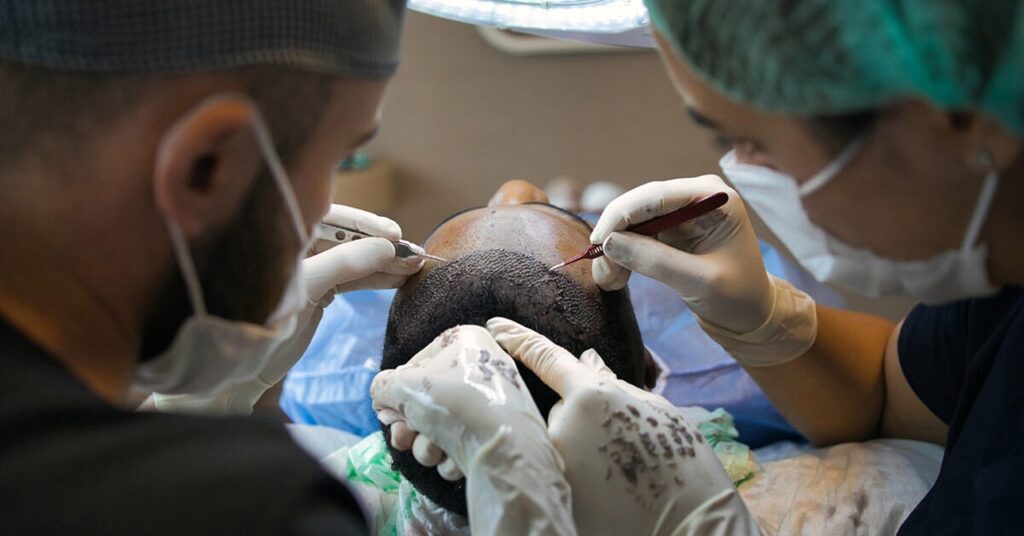
~
Hair transplant surgery has advanced significantly in the last two decades. Today, patients seeking natural and permanent solutions to hair loss are often presented with three main techniques: FUE (Follicular Unit Extraction), DHI (Direct Hair Implantation), and FUT (Follicular Unit Transplantation). Each method offers unique advantages, and the right choice depends on the patient’s hair loss pattern, donor area condition, and aesthetic goals.
This article explains these techniques in detail, highlights their differences, and helps patients understand which approach may be most suitable.
1. Follicular Unit Extraction (FUE)
Overview:
FUE is one of the most widely practiced techniques worldwide. In this method, individual follicular units are extracted directly from the donor area (usually the back or sides of the scalp) using a micro-punch tool. These follicles are then transplanted into the recipient area.
Procedure Steps:
- Local anesthesia is applied to the donor area.
- Hair follicles are harvested one by one using tiny punches (0.7–1.0 mm).
- Small incisions are made in the balding area.
- Extracted follicles are inserted into these incisions.
Advantages:
- Minimal scarring (tiny dot scars that are usually invisible).
- Faster recovery compared to FUT.
- Allows patients to wear short hairstyles.
- Natural-looking results when performed by an experienced surgeon.
Considerations:
- Procedure can take longer than FUT.
- Requires precision to avoid overharvesting the donor area.
- May need multiple sessions for advanced hair loss cases.
2. Direct Hair Implantation (DHI)
Overview:
DHI is a modified and more advanced version of FUE. The key difference lies in how the follicles are implanted. Instead of creating incisions first and then inserting follicles, DHI uses a specialized implanter pen that allows extraction and implantation to happen in a more direct, controlled manner.
Procedure Steps:
- Follicles are extracted individually, similar to FUE.
- Using the Choi implanter pen, each follicle is implanted directly into the recipient area without pre-made incisions.
Advantages:
- Higher precision in angle, depth, and direction of implanted hair.
- Reduced time follicles spend outside the body, improving survival rate.
- Faster healing with less bleeding.
- Denser, more natural results, especially suitable for hairline design.
Considerations:
- Requires advanced surgical skill and specialized tools.
- Often more expensive than standard FUE.
- The number of grafts per session may be slightly lower compared to FUT or standard FUE.
3. Follicular Unit Transplantation (FUT)
Overview:
FUT, sometimes called the “strip method,” was one of the earliest modern hair transplant techniques and is still practiced today. In FUT, a thin strip of scalp is surgically removed from the donor area, and then individual follicular units are dissected under a microscope before transplantation.
Procedure Steps:
- A strip of scalp is removed from the donor area.
- The wound is sutured, leaving a linear scar.
- The strip is dissected into follicular units.
- Small incisions are made in the recipient area, and the follicles are implanted.
Advantages:
- Higher number of grafts can be transplanted in a single session.
- Well-suited for patients with advanced hair loss who need extensive coverage.
- Typically more affordable than DHI.
Considerations:
- Leaves a linear scar, which can limit very short hairstyles.
- Longer recovery time compared to FUE and DHI.
- Slightly higher discomfort in the donor area post-surgery.
4. Key Differences at a Glance
| Feature | FUE | DHI | FUT |
|---|---|---|---|
| Scarring | Tiny dot scars | Tiny dot scars | Linear scar |
| Recovery Time | 7–10 days | 7–10 days (sometimes faster) | 2–3 weeks |
| Precision of Implanting | High | Very high (controlled angle & depth) | Moderate |
| Number of Grafts/Session | Moderate | Moderate to lower | High |
| Cost | Moderate | Higher | Lower |
| Best For | General cases, versatile | Hairline design, dense packing | Extensive baldness coverage |
5. Which Technique Is Best for You?
The choice between FUE, DHI, and FUT depends on several factors:
- Extent of Hair Loss:
- FUT is often better for advanced baldness due to high graft yield.
- FUE and DHI are ideal for mild to moderate cases and for those wanting minimal scarring.
- Desired Hairstyle:
- Patients wanting very short haircuts usually prefer FUE or DHI.
- FUT’s linear scar can be visible with short styles.
- Budget:
- FUT is usually the most cost-effective.
- DHI tends to be the most expensive, reflecting its advanced tools and precision.
- Aesthetic Goals:
- For natural hairlines and density, DHI offers superior implantation control.
- For overall coverage, FUT provides the highest number of grafts.
Conclusion
Modern hair transplant surgery offers effective, lasting solutions through FUE, DHI, and FUT techniques. While FUE provides versatile and scar-minimal results, DHI delivers unmatched precision and natural density. FUT, on the other hand, remains a practical choice for patients requiring maximum graft numbers at a lower cost.
Choosing the right technique should always be based on a thorough consultation with a qualified hair transplant surgeon, who can evaluate the donor area, hair loss pattern, and personal goals. With the right approach, patients can achieve natural, permanent restoration that significantly improves both appearance and confidence.
At Expirius.sg, our patients are provided the advanced DHI hair transplant technique for maximum satisfaction and quality. We also offer the same fixed price for our hair transplant surgery packages regardless of the number of hair grafts that you need. Contact us for your FREE hair transplant consultation and be prepared for a permanent hair solution that you sorely desire!
